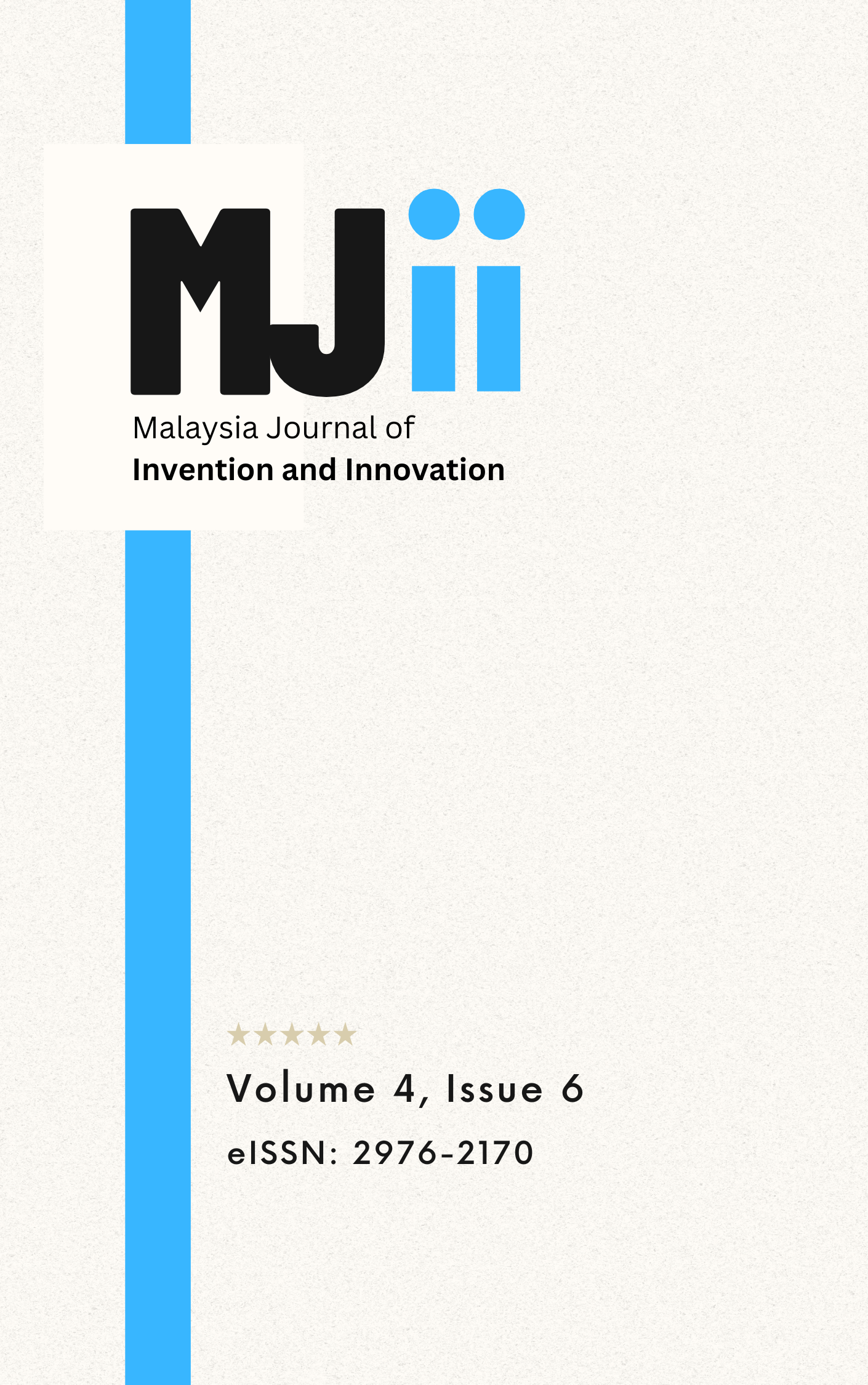Innovative Biosorption of Crystal Violet Dye Using Chemically-Enhanced Pineapple Crown Leaf (CPCL)
DOI:
https://doi.org/10.64382/mjii.v4i6.110Abstract
: This study presents a sustainable and innovative approach to dye-contaminated wastewater treatment using pineapple crown leaves (PCL) as a low-cost biosorbent for the removal of crystal violet (CV) dye. Synthetic dyes like CV are widely used in the textile industry and pose serious environmental threats due to their toxicity, stability, and resistance to conventional treatment methods. Agricultural waste such as PCL offers an eco-friendly alternative for wastewater remediation, aligning with circular economic principles. In this work, raw PCL (RPCL) and NaOH-treated PCL (CPCL) were evaluated for their adsorption performance. Chemical treatment with sodium hydroxide significantly enhanced the surface properties of PCL by increasing porosity, surface area, and the number of active functional groups, as confirmed by Fourier Transform Infrared Spectroscopy (FTIR) analysis. Batch adsorption studies were conducted with varying adsorbent dosages to compare the dye removal efficiency of RPCL and CPCL. The results revealed that CPCL exhibited better adsorption capacity, achieving a maximum dye removal efficiency of 98.35%, compared to 97.02% for RPCL. The improved performance of CPCL demonstrates the effectiveness of alkali activation in enhancing biosorbent properties. This research emphasizes the potential of transforming agricultural waste into high-performance adsorbents for industrial wastewater treatment. The method is not only cost-effective and environmentally friendly but also scalable, offering practical applications in textile effluent management and rural water purification. The findings contribute to green chemistry initiatives and support sustainable innovation in environmental technology, making it highly relevant for industries seeking efficient, environmentally responsible dye remediation solutions.
Downloads
Published
Issue
Section
License
Copyright (c) 2025 Rabuyah Ni, Muhammad Mirza Hizami Rajiei, Rohit Paul

This work is licensed under a Creative Commons Attribution 4.0 International License.
The authors of MJII retain copyright to the content of the articles.
The content is published under the Creative Commons Attribution (CC BY) 4.0 which allows content to be copied, adapted, displayed, distributed, republished, or otherwise re-used for any purpose, including for adaptation and commercial use provided the content is attributed without any restriction.
Authors Rights
The Journal grants you the following non-exclusive rights, subject to giving propoer acknowledgement to the original journal. The authors may:
(i) to reprint or reproduce the contribution, in whole or in part, in any publication of your interest.
(ii) to use material for teaching purposes; including availability of the matarial in academic course.
(iii) to post a copy of the contribution on your personal or institutional web server, provided that the server is non-commercial and there are no charges for access, and
(iv) to deposit a copy of the contribution in a non-commercial data repository maintained by an institution of which you are a member.
Author's Agreement
Author(s) guarantee the journal the following:
(i) that the contribution is their original work;
(ii) that it contains, no matter what, content that is defamatory or is otherwise unlawful or which invades rights of privacy or publicity or infringes any proprietary rights (including copyright);
(iii) that the contribution has not been published elsewhere in whole or in part and that no agreement to publish is outstanding other than this agreement. Author(s) agree to be responsible and hold the journal, its editors, staff and affiliate organizations harmless against any claims arising from or related to the breach or inaccuracy of any of the guarantees listed above.
Disclaimer
The editorial team of the MJII and the publication team of Academica Press Solutions share no responsibility regarding the views and opinions expressed by the authors.
The content published in MJII is Open Access and can be shared, adapted, reproduced, reprinted, after appropriate acknowledgment and giving due credit to the author(s) work.


